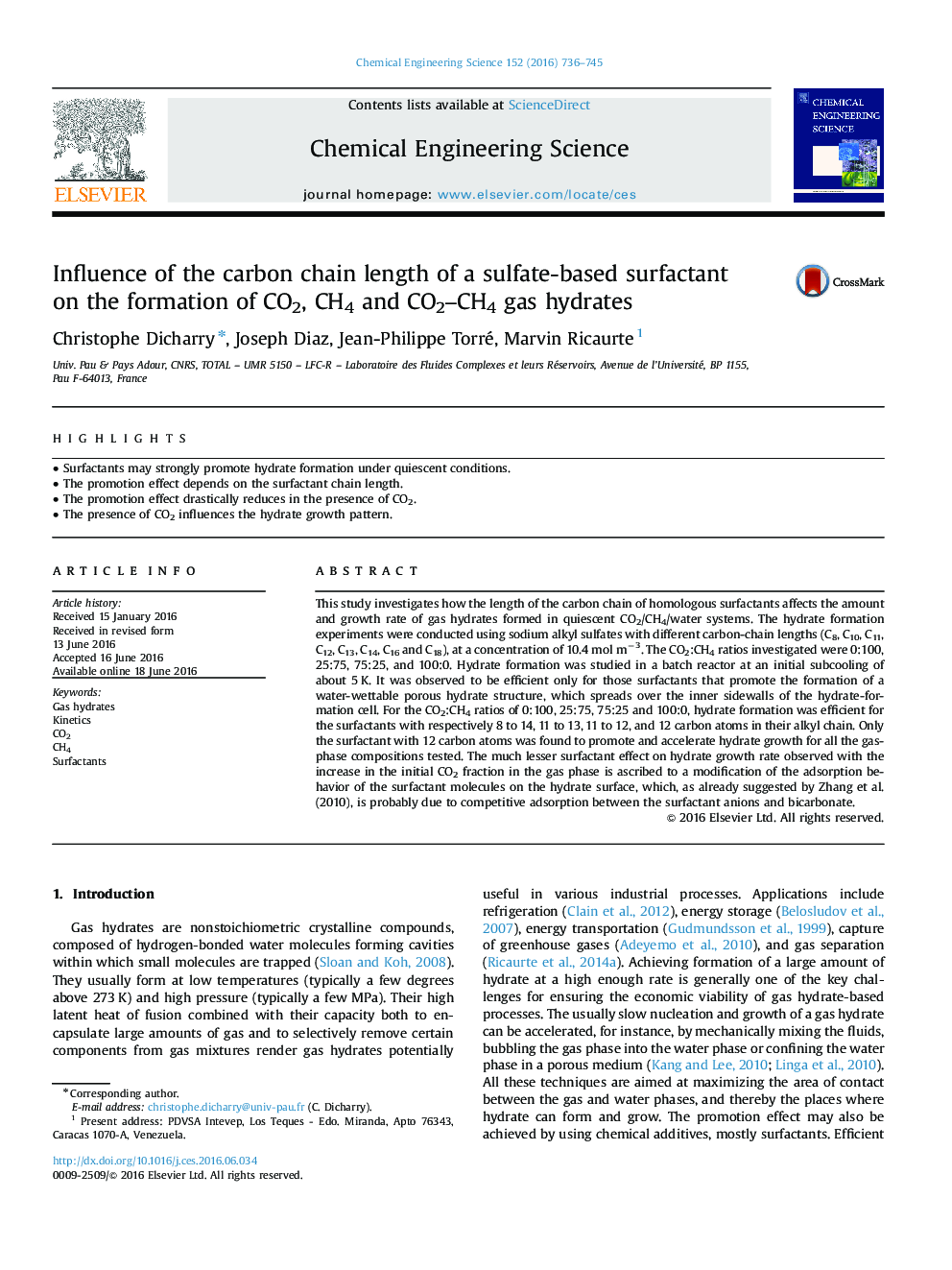| Article ID | Journal | Published Year | Pages | File Type |
|---|---|---|---|---|
| 6589031 | Chemical Engineering Science | 2016 | 10 Pages |
Abstract
This study investigates how the length of the carbon chain of homologous surfactants affects the amount and growth rate of gas hydrates formed in quiescent CO2/CH4/water systems. The hydrate formation experiments were conducted using sodium alkyl sulfates with different carbon-chain lengths (C8, C10, C11, C12, C13, C14, C16 and C18), at a concentration of 10.4 mol mâ3. The CO2:CH4 ratios investigated were 0:100, 25:75, 75:25, and 100:0. Hydrate formation was studied in a batch reactor at an initial subcooling of about 5 K. It was observed to be efficient only for those surfactants that promote the formation of a water-wettable porous hydrate structure, which spreads over the inner sidewalls of the hydrate-formation cell. For the CO2:CH4 ratios of 0:100, 25:75, 75:25 and 100:0, hydrate formation was efficient for the surfactants with respectively 8 to 14, 11 to 13, 11 to 12, and 12 carbon atoms in their alkyl chain. Only the surfactant with 12 carbon atoms was found to promote and accelerate hydrate growth for all the gas-phase compositions tested. The much lesser surfactant effect on hydrate growth rate observed with the increase in the initial CO2 fraction in the gas phase is ascribed to a modification of the adsorption behavior of the surfactant molecules on the hydrate surface, which, as already suggested by Zhang et al. (2010), is probably due to competitive adsorption between the surfactant anions and bicarbonate.
Related Topics
Physical Sciences and Engineering
Chemical Engineering
Chemical Engineering (General)
Authors
Christophe Dicharry, Joseph Diaz, Jean-Philippe Torré, Marvin Ricaurte,
